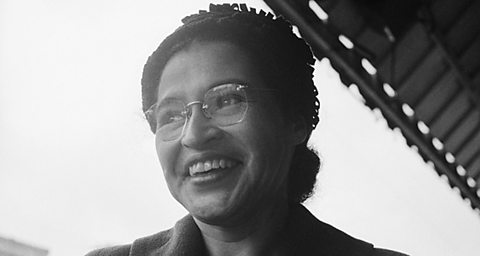
Rosa Parks was born on 4 February 1913.
She grew up on a farm in Montgomery, Alabama.
As a child her grandfather would take her into town with him. She started to notice that people were kept apart in all sorts of ways depending on the colour of their skin.
At the townhall, black people and white people had separate entrances. They had to drink from separate water fountains and use different public toilets. They had to go to different churches.
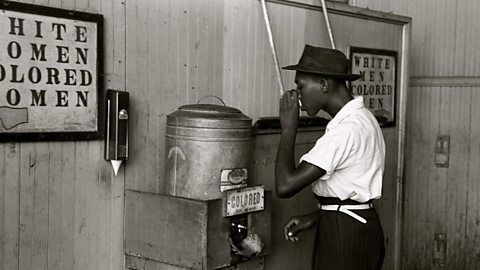
In a waiting room they had to sit on separate seats. Even when the black section was full, they were not allowed to sit on the free white seats.
At the bus stop the black people had to stand in line, while the white people got to sit on a bench.
Parks found the situation very confusing and did not understand why the world was unjust towards black people.
The situation felt hopeless as it was the government who made the rules.
Segregation in the US: Jim Crow laws
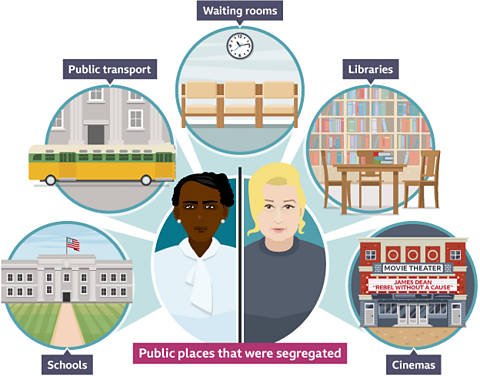
The day everything changed

In 1943 Rosa Parks became a member of the Montgomery chapter of the National Association for the Advancement of Coloured People (NAACPAn interracial American organisation created to work for the abolition of segregation and discrimination in housing, education, employment, voting, and transportation; to oppose racism; and to ensure African Americans their constitutional rights.).
She served as its secretary until 1956.
She got a job working in a department store. Each day she got the bus to work.
Segregation laws in Montgomery stated that black people had to sit at the back end of the bus while white people had a reserved section at the very front. When a bus was full, the black passengers had to stand and give their seat to a white passenger.
On 1 December 1955, Rosa Parks was returning home from work on the bus.
When the driver saw there were white passengers standing in the aisle, he asked Parks and other black passengers to give up their seats and stand. Three of the passengers left their seats, but Rosa Parks refused and was arrested.
She accepted Montgomery NAACP chapter president E.D. Nixon’s offer to help her appeal the conviction and thus challenge legal segregation in Alabama.
They were aware that they were putting themselves at risk of harassment and death threats, but knew the case had the potential to spark change.

Bus boycott
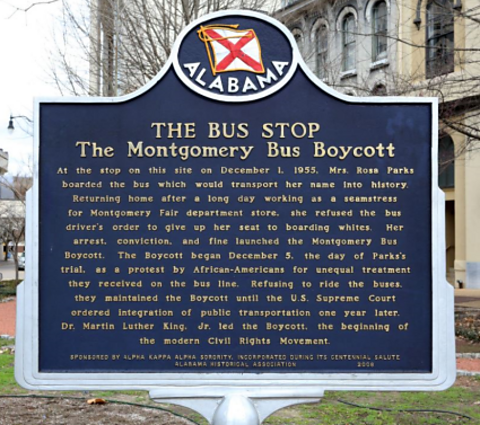
Rosa’s act of defiance sparked a movement.
As a result of it, people organised a bus boycott, which meant they stopped using buses for a year.
This had a big monetary impact on the bus company. The boycott was a peaceful stand against racism.
The courts eventually decided that the segregated nature of Montgomery’s buses was UnconstitutionalSomething that is not allowed by the constitution (a set of rules for government) of a country or organisation. and ordered an end to the bus laws.
The boycott demonstrated the economic power of black communities when they worked together. It also highlighted the effectiveness of non-violent protest.

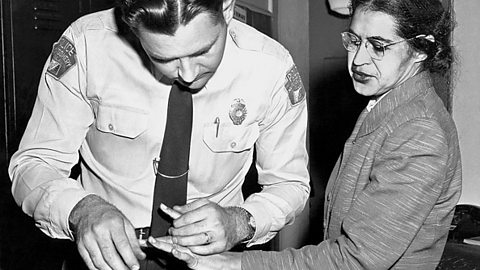
Image caption, Rosa was arrested for her actions. She was fined a total of $14 in court, and later lost her job in a department store.
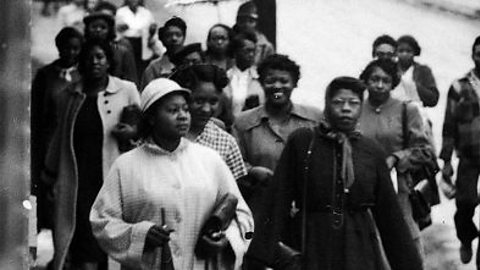
Image caption, The National Association for the Advancement of Colored People used her case to challenge segregation on buses. Along with Parks, they organised a bus boycott in Montgomery, during which black people didn’t use the buses for over a year. This lasted from 5 December 1955 to 20 December 1956. Instead of using the buses, people walked to work and black Americans with cars gave people lifts.
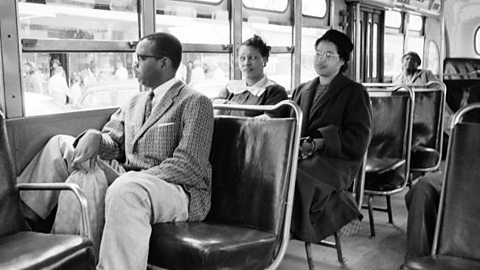
Image caption, In November 1956, the Supreme Court ruled that the bus segregation was unconstitutional. The boycott had been hugely effective because it had a big financial impact on the bus service. Black Americans made use of their collective economic power to bring segregation on buses to an end.
1 of 3
Legacy
In 1957 Parks moved with her husband and mother to Detroit, Michigan. From 1965 to 1988 she worked on the staff of Michigan Congressman John Conyers Jr. She remained active in the NAACP.
She received numerous awards, including the Presidential Medal of Freedom in 1996 and the Congressional Gold Medal in 1999.

When Rosa Parks died on 24 November 2005, her body lay in state in the rotunda of the US Capitol. This is an honour reserved for private citizens who performed a great service for their country.
There is a Rosa Parks Day, which is an observance, and not a public holiday in America. It is observed each year in California and Missouri on February 4 and Alabama and Ohio on December 1.
Rosa Parks: In her own words
Rosa Parks and her lawyer explain the significance of the Montgomery Bus Boycott for the black community and the civil rights movement
Quiz time: Can you choose the correct order?
More on Historical figures
Find out more by working through a topic
- count3 of 7

- count4 of 7

- count5 of 7

- count6 of 7
